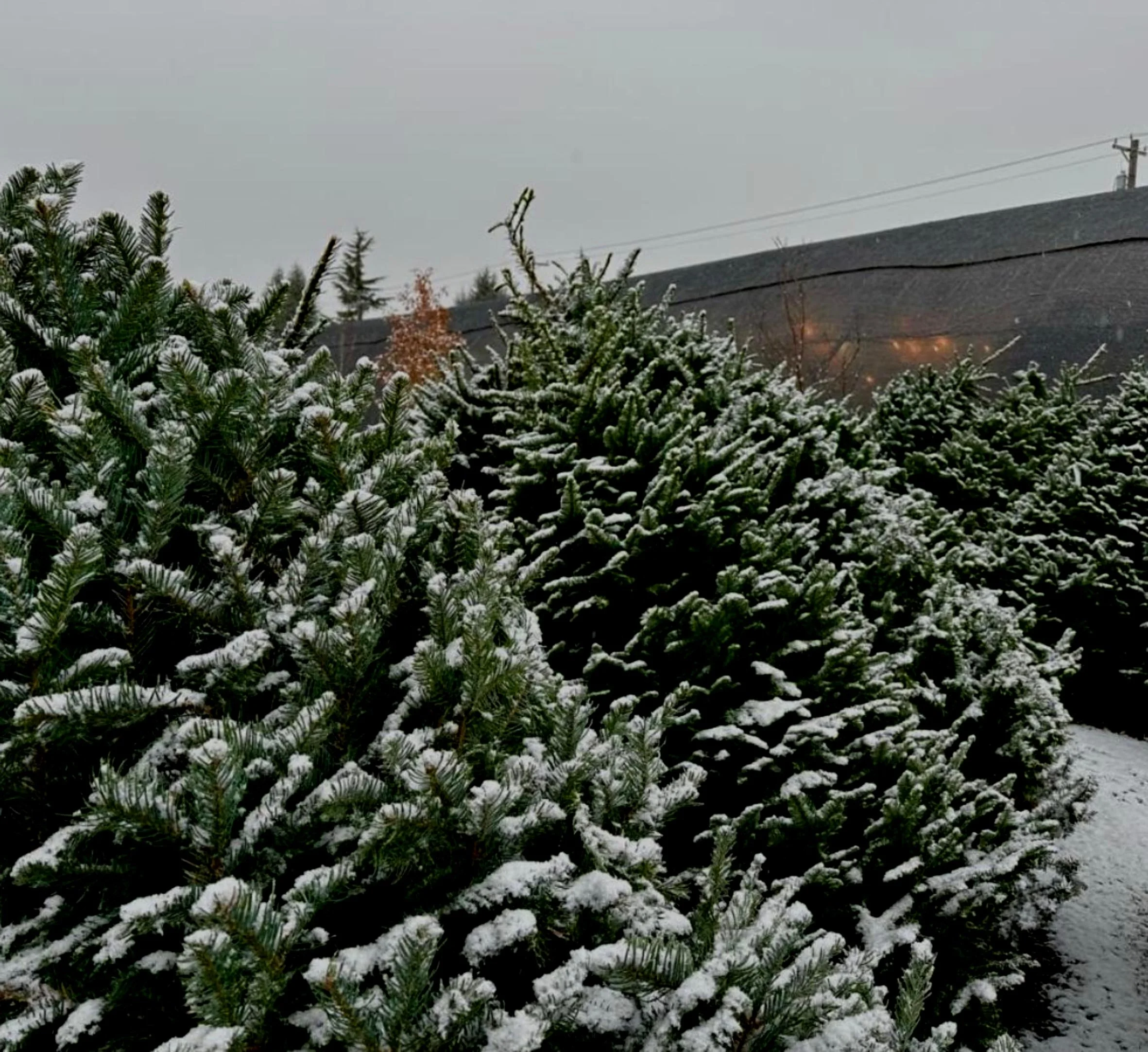O Christmas Tree, O Christmas Tree, how lovely are your branches… Not only green in summer’s heat, but also in winter’s snow and sleet… Absolutely one of my favorite holiday songs, so simple. I am so grateful that you all cannot hear my off key singing - a window may have just shattered somewhere nearby, who knows. This tune is even better when sung in German (O Tannenbaum), which of course is where it all started many moons ago.
The origin of Christmas trees can be traced back to Germany and the Baltic States during the Renaissance, with the first recorded Christmas tree in 1539 in the Cathedral of Strasbourg. Folklore takes it back a bit farther, as Martin Luther was rumored to have decorated the very first evergreen tree with simple candles after being inspired while walking through the winter woods. He gazed upwards amongst all of the tall evergreens, adorned with stars overhead, then supposedly tried to explain this euphoric experience to his family. To show them, he brought a tree indoors, added some candles, and so it began.
The use of evergreen trees, wreaths and garland represents eternal life in many cultures, going back for millennia, including the ancient Chinese, Egyptians, and the Hebrews. This continued for centuries with the Pagan Europeans as a winter tradition, who referred to Christmas simply as “Yule.” (Ironically many cultures still do this, including my homeland Scotland, Scandinavians, and numerous others.) Pagan trees symbolized everlasting life, as well as fertility, and were thought to ward away evil spirits at New Years and celebrate the renewal of light after the Winter Solstice.
Much later in 16th century Germany, the tradition was to decorate the “Yule” tree on Christmas Eve (or as it was called a “Paradise Tree”) to honor the feasting of Adam and Eve on Christmas Eve. These trees were decorated with apples, other fruits and later on, more edible confections and goodies. Decorating evolved over the following centuries and rose to the next level in the mid-19th century with England’s Queen Victoria. Fancy decorations such as new toys, small gifts, candies, popcorn, and fancy cakes were hung with care from ribbons or paper strings for decorations. I can almost close my eyes and picture this… a tree with exquisite colors, fancy lace, and delicious baked goods – almost sounds like my grandmother’s beautiful tree some 40 years ago.
In our fine country, it seems the Germans were once again responsible for enlightening us Americans on the beauty and traditions of the Christmas Tree. In Pennsylvania circa 1820, the German community actually cut one for an outdoor display, in essence starting our national tradition. Trees were soon brought indoors as well and interestingly enough, often accompanied by a wooden handmade pyramid which was decorated in lieu of the actual evergreen tree. The Christmas tree has continued to evolve over the years, from a beginning with perhaps more Christian symbolism to current times where it represents more of a secular, non-denominational theme. In my mind, each individual family should take their own meaning from their own tree. To take a step further, everyone should do their thing and celebrate their own traditions when it comes to the Christmas Tree - none of which are wrong and all of which are perfect.
Locally, this is the time of year folks visit garden centers, tree lots and even the “u-cut” farms. Some even grab a USFS permit and visit a local National Forest to cut one down, going au natural. Speaking as a thirty year garden center veteran, we obtain some incredibly nice specimens for the holidays, locally sourced from sustainable family tree farms. Although the Charlie Brown trees are fun, there is nothing quite like a fresh, fragrant, symmetrical, perfectly spaced evergreen in the house for the holidays. Typically you will find Noble Fir everywhere, but take a peek at others like Grand Fir, Fraser Fir, and even Nordmann Fir.
When your cut tree comes home with you, be sure to make a fresh cut right before it goes into water by taking about 1-inch off the base. This opens up the tree’s vascular system, allowing it to drink water and keep your tree fresh. Not doing this leaves you with the cut from harvest time, which has calloused over and will draw in virtually no water for the tree. There are a few good natural preservatives out there as well to help keep it fresh. Be sure to check your Christmas tree daily for water, keep the stand reservoir full and do not let it dry out. Displaying it away from heat sources, like vents and fireplaces, is always best as well. Many wonder when to take the tree down? Don’t listen to your pesky neighbor or “that” relative, you make your own rules and take it down when you want to, simple as that.
Personally, I think it is wonderful that so many people from so many places celebrate the holidays in so many different ways, some with a Christmas tree and perhaps others without one. Many of us can agree that the holidays crossed the threshold of over-commercialization years ago, but that should not mean that the Christmas spirit has been diminished. Whether you go with “It’s a Wonderful Life” or “Christmas Vacation” on movie night, the important thing it is do what you do, celebrate in your own way, and hopefully pass on traditions like respect for nature, inclusiveness, compassion and especially peace. For me that includes a beautiful tree in my house, but more importantly, it means quality time spent with my wife and boys decorating it, all the while talking about Christmas fun from the past. I sincerely hope that everyone spends quality time with their family and friends, pausing to not only appreciate the simple things around us all, but also embracing the wonderful things that life has given and continues to give us, especially at Christmastime.



